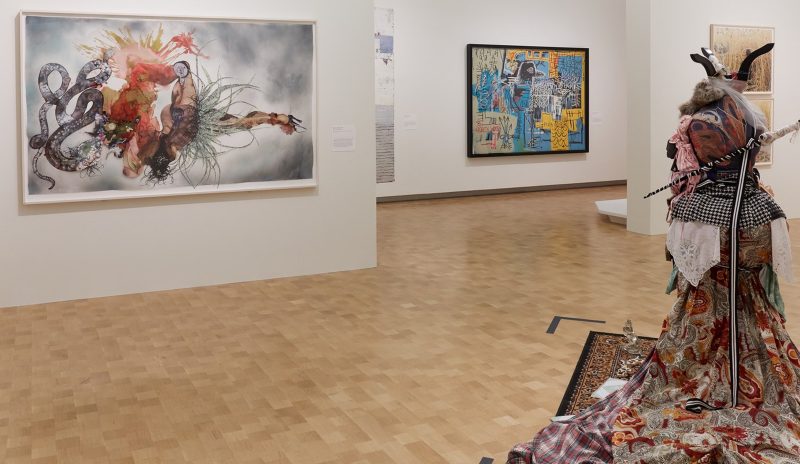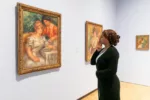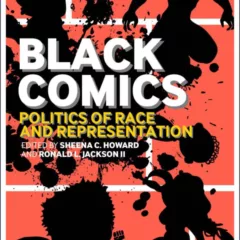
The Triumphs and Shortcomings of 30 Americans
by Kinaya Hassane
In her article, “A Sea Change in the Art World, Made by Black Creators,” Roberta Smith, despite her efforts, falls into a trap she and many of her peers have fallen into in the past several years when approaching the subject of Black art. Smith uses her end-of-decade review to uncritically pinpoint this past decade as a unique moment in the history of Black artistic production. She writes with a celebratory tone and makes only vague references to the intentional exclusion of Black artists from gallery and museum exhibitions. And while she acknowledges the limited chronological scope of artists who received mainstream recognition, her article still plucks contemporary Black artists out of a broader historical context and ignores the systemic racism that has persisted in major institutions.
Where does 30 Americans at the Barnes Foundation fit into this ongoing conversation? The Barnes is, in some respects, a peculiar venue. Before moving to Philadelphia, my impression of the institution was dominated by what I knew about its namesake through prior research about patrons of African American artists. Albert C. Barnes was a supporter of Harlem Renaissance artists, but this is not evident when walking through the Foundation’s permanent collection galleries. One instead gets a better sense of the collector’s fondness for artists like Pablo Picasso and Henri Matisse, who drew inspiration from works of African art like those on display at the Barnes. This marked emphasis on Barnes’s patronage of more well-known white artists is one worth noting, given the fact that the institution is situated in a city with such a strong tradition of Black artistic production.
30 Americans therefore appears to serve as a bold intervention into the art historical narrative presented by the Barnes’s permanent collection. However necessary this intervention may be, I could not help but imagine a white critic like Smith walking through the exhibit and feeling as though this exhibition could serve as proof of Black artists’ final triumph over racial inequality in museums. The show features many of the heavy-hitters Smith name-dropped in her article, including Kerry James Marshall, Kara Walker, and Glen Ligon. Their placement in an institution that has a dearth of African Americans in its collection appears promising on the surface. However, the Barnes’s audiences would have benefited more from learning more about Black artists working concurrently with the late nineteenth and early twentieth century ones in the nearby galleries. Such juxtaposition would have better illustrated the erasure of work by Black artists from the art historical canon.
While the exhibition falls short of its presumptive goal of disrupting the Barnes’s typical presentation of art history, it does make a worthwhile contribution to debates over what constitutes American art. While most shows of its ilk purport to center the artistic accomplishments of its featured African American artists, they are often end up tokenizing the artists involved, simply talking about their work as it relates to the participants’ Blackness. This tokenization reinforces the continued othering of Black artists and separates their achievements from the narrative of American art. The title, 30 Americans, bucks this pervasive trend in its emphasis on the artists’ Americanness.
Although Blackness is decentered in the title, it is ultimately the subject of much of the art in the exhibition. The works, all of which are held in the Rubell Family Collection, succeed nonetheless in both shattering conventional notions of who African American artists are and of what their art looks like. The exhibition includes a smattering of artists from across the African Diaspora, like Wangechi Mutu, who is Kenyan-American and was recently commissioned to create new sculptures for the facade of the Metropolitan Museum of Art. By expanding presumptive notions of who is African American, the exhibition opens the door for conversations about how Black immigrants like Mutu have made significant contributions to American visual culture and how they are in conversation with their native-born African American peers.
While the exhibit is saturated with figurative paintings by artists like Marshall, Nina Chanel Abney, and Henry Taylor, it also features several of Nick Cave’s Sound Suits and multimedia works by Lorna Simpson. The exhibition therefore avoids taking a side in the highly politicized debate over whether Black artists should be working in primarily in representational or abstract art, therefore allowing viewers to walk away with a more expansive and eclectic view of contemporary Black art.
Despite its shortcomings, 30 Americans does bring about necessary conversations about race, representation, museum practice, and collecting, issues which are all at the core of the Foundation’s present-day existence. What does it mean, after all, that this exhibition was made possible by the patronage of a wealthy white couple and has now travelled to the walls of a museum whose collection was made possible by an earlier white collector? 30 Americans provides no clear cut answers, but it does give evidence of the work cut out for scholars, critics, and museum professionals in the decade ahead of us.
Bio
Kinaya Hassane is the Curatorial Fellow in the Print and Photograph Department at the Library Company of Philadelphia. She received her B.A. with honors in Art History and a minor in History at Bowdoin College. While at Bowdoin, she was a Mellon Mays Undergraduate Fellow and wrote her senior thesis about the history of collecting African American art. Before coming to the Library Company, Kinaya was an intern in American Art at the Brooklyn Museum. Upon completing the fellowship in March 2021, Kinaya plans to attend graduate school and pursue her Ph.D. in Art History, specializing in American art or art of the African Diaspora. Outside of art, her interests include pop culture, knitting, and devising the perfect skin care routine.









